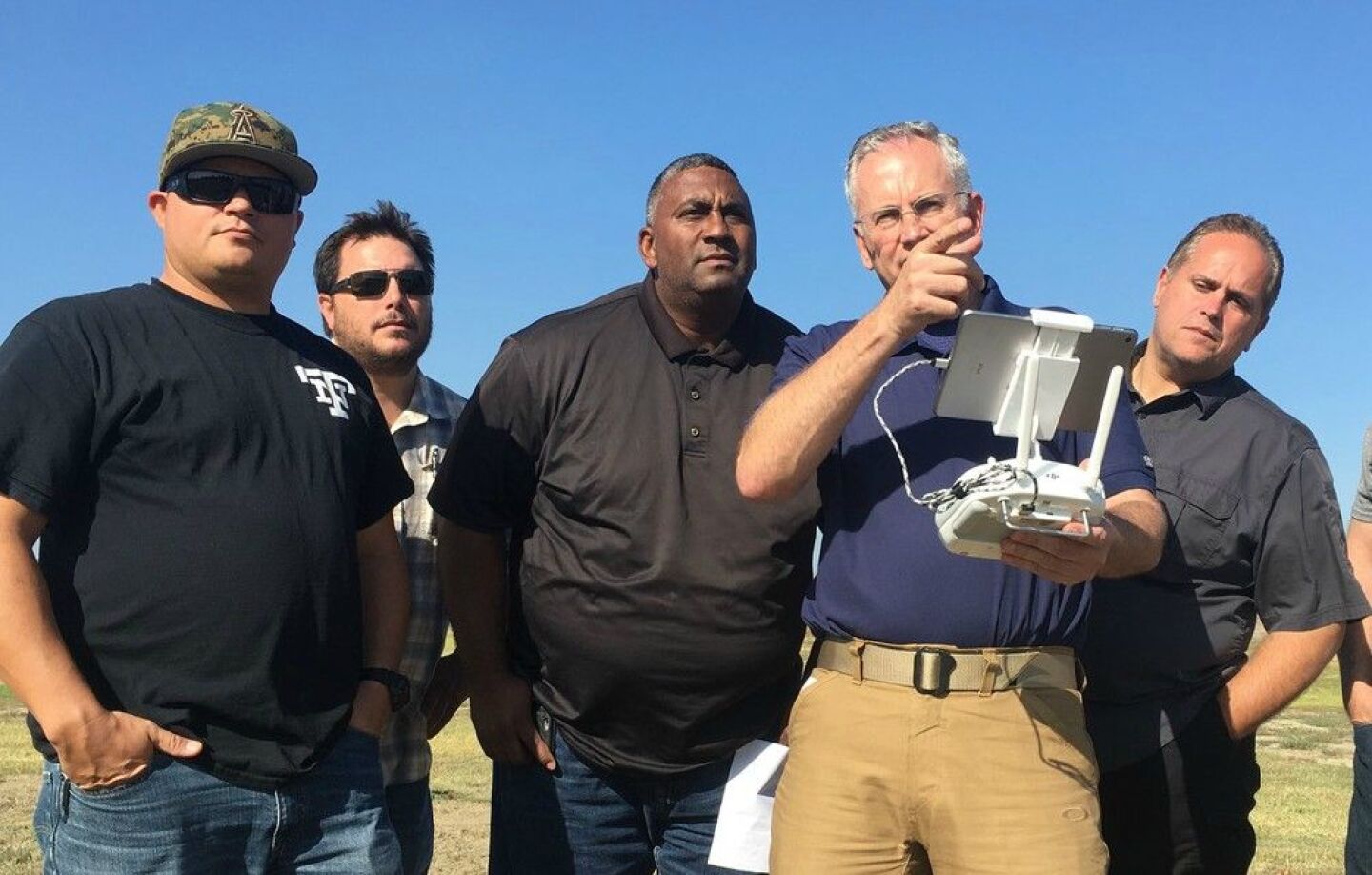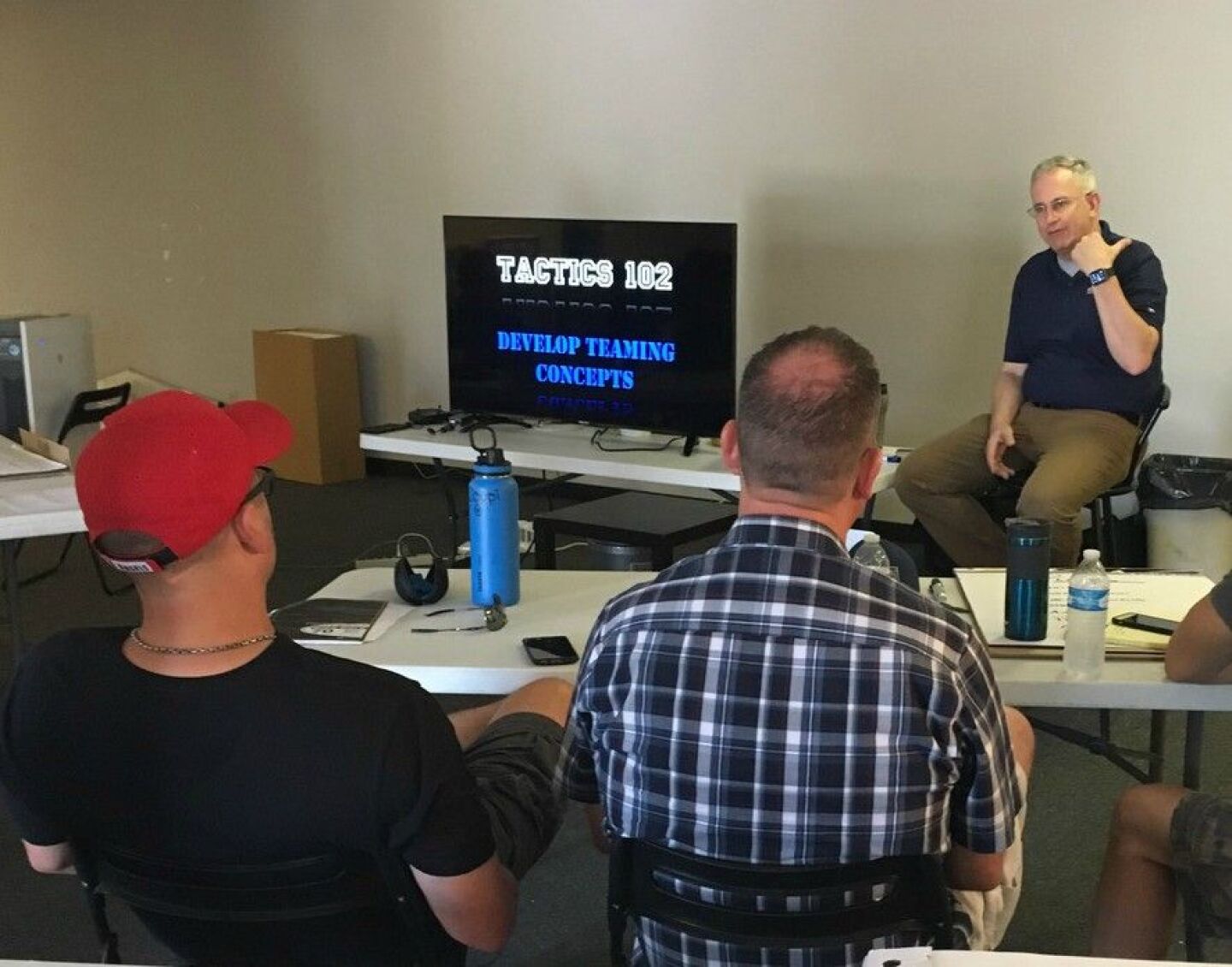PoliceOne’s 2018 Guide to Drones in Law Enforcement outlines several ways police departments are deploying UAS. Drones can play a key role in active shooter response, gaining crucial intelligence on a suspect’s location without risking the lives of officers. The PoliceOne Academy features several hours of training on active shooter response and campus policing. Visit PoliceOne Academy to learn more and for an online demo.
By Tony DeMolina, P1 Contributor
Developing an unmanned aircraft system (UAS) training program for public safety presents both technical and tactical challenges.
A comprehensive training program must address:
- Evolving regulations for the use of UAS;
- Expanding roles for police deployment of UAS;
- Creating public approbation for drone operations;
- Ensuring safety – a critical element highlighted by the Federal Aviation Administration (FAA) – is infused into training.
These concepts are incorporated in DRONE Training, a method for creating UAS education architecture and training plans taught through the Los Angeles County Regional Training Center (LACRTC), a non-profit organization providing training to public safety personnel.
DRONE Training systematically addresses the challenges of combining shared concepts derived from public safety and aviation communities. The acronym stands for:
- Determine Pre-Scripted Mission Sets
- Research Requirements
- Obtain Authorizations and Authorities
- Note Areas of Increased Risk
- Evaluate Capabilities and Limitations.
UAS A3 Analysis – also taught through LACRTC – analyzes operational gaps between the aviator, aircraft and airspace to ensure a comprehensive training regimen ready for operations built on emerging aviation technology.
Together, these strategies forge a successful training program for UAS operations.
Determine Pre-Scripted Mission Sets
A UAS training plan begins with “Determining Pre-Scripted Mission Sets.”
Public safety UAS pilots owe a debt of gratitude to the pioneers in police and fire services who flew search and rescue and traffic collision reconstruction flights. Contemporary missions leverage the tactical capabilities of small semi-autonomous aircraft. The disparity between these missions cannot be understated.
When grouped by similar function, five separate categories emerge:
- Mapping and surveying;
- Photographic documentation of scenes;
- Tactical ISR (information, surveillance and reconnaissance);
- Supply transportation;
- Public relations.
Public safety training time is a valuable commodity. The goal is to develop specific mission sets from the overarching functional areas and concentrate training time and resources on specified and implied tasks associated with those missions. Exercising pre-scripted mission sets becomes the foundation of the unit’s operational capability.
Research Requirements
The next step in crafting a training program is to “Research Requirements.”
The logistical requirements of aviation training are complex. The most pressing concern is coordinating a training area with ample airspace free from encumbrances of other aircraft or the non-participating public (a term used by the FAA to describe people on the ground not associated with the UAS operation).
Aeronautical training can encompass an expansive geographical footprint, requiring suitable obstacles in order to negotiate the conduct of searches. Based upon established pre-scripted mission sets, both exterior and interior locations may be required.
Another concern for the UAS training planner is establishing a fleet of training aircraft or accepting the risk of damage to the operational capability of the unit. While airspace and aircraft are common to all flight operations, collective training presents additional requirements to the overall plan. Collective training occurs between two units working together for a common goal. Whether a search is conducted in concert with K-9 or UAS support bomb technicians, identify resource requirements before the training occurs.
Obtain Authorizations and Authorities
“Obtaining Authorizations and Authorities” has a direct correlation to the requirements of the training plan.
UAS flights, whether operational or training, occur under one of three banners established by the FAA:
- Public Use (Federal or State governmental organizations);
- 14 CFR Part 107 (civil operations);
- 14 CFR Part 101 (involving model or recreational flight).
Each has unique requirements for airborne sUAS activities.
Public Use flights require a documented training program designed by the concerned entity. Governmental status must be established with the FAA as a precursor to the application process. A Certificate of Authorization or Waiver (COA) documents sUAS permissions and limitations in the same manner as a memorandum of agreement.
Conversely, Part 107 establishes minimum training requirements for organizations conducting flights. Part 107 requires each pilot to be individually licensed through the FAA. A Part 107 waiver will only be granted after the responsible party has demonstrated the flight can be conducted safely. Under Part 107, airspace access is obtained through the waiver process and currently requires a 90-day lead time for processing.
In the near future, the FAA will roll out the Low Altitude Authorization and Notification Capability (LAANC) nationwide. Currently, the program is in the testing phase at 45 airports across the country. LAANC hopes to expedite airspace authorizations down to a matter of minutes, which today take months to obtain.
While somewhat counterintuitive, Part 101-hobby and recreational flights generally require no approval at all. Pilots are simply required to notify any airport or heliport within five miles of the aircraft’s flight path of their presence.
Although it is tempting to look toward Part 101 for training needs, the section limits the pilot to non-commercial activities. Since the trainee cannot be paid for piloting the aircraft and the operation would need to be separate and apart from the workplace, Part 101 is only viable for individual training to address currency and proficiency issues. It is important to note that the concerned pilot must ensure “the aircraft is operated in accordance with a community-based set of safety guidelines and within the programming of a nationwide community-based organization.”
Any interior training is not under the purview of the FAA and not considered part of National Airspace. Interior operations are only regulated by organizational policy.
Note Areas of Increased Risk
The FAA provides guidance on establishing a safety management system in Advisory Circular 120-92B. The information it contains can be used to “Note Areas of Increased Risk” in the training plan. Systematic hazard identification, followed by an assessment of each hazard, guides the development of mitigation strategies to establish a training environment free of accidents or incidents.
Evaluate Capabilities and Limitations
To effect an efficient UAS training program, agencies need to Evaluate Capabilities and Limitations of the aircraft’s intended use before and after the training event. A flight should not occur operationally until the pre-scripted mission set is tested and validated. Failure outside of the training environment leads to a lack of confidence in the airborne system and potentially puts the entire program in jeopardy.
Additional Resources
Training planners are not on their own accomplishing these tasks. The
Airborne Public Safety Association (APSA), formerly known as the Airborne Law Enforcement Association, has many resources including Recommended Standards for Small Unmanned Aircraft Systems Operations. The association also has a monthly user group meeting addressing current regulatory changes and issues. Information on APSA is available at https://publicsafetyaviation.org.
About the Author
Tony DeMolina is the director of aeronautical training for the Los Angeles County Training Center (LACRTC), a non-profit organization established for the purpose of providing training to public safety personnel. LACRTC has trained hundreds of public agency personnel in sUAS operations over the past several years. Tony has 29 years of law enforcement experience, with over 17 years specifically in airborne law enforcement. He is a certified flight instructor with the FAA and he is certified as a master instructor through CA POST. Tony retired after 30 years of service in the Army Reserve. He was last assigned as the G-7 training for the 76th Operational Response Command at the rank of Colonel.







